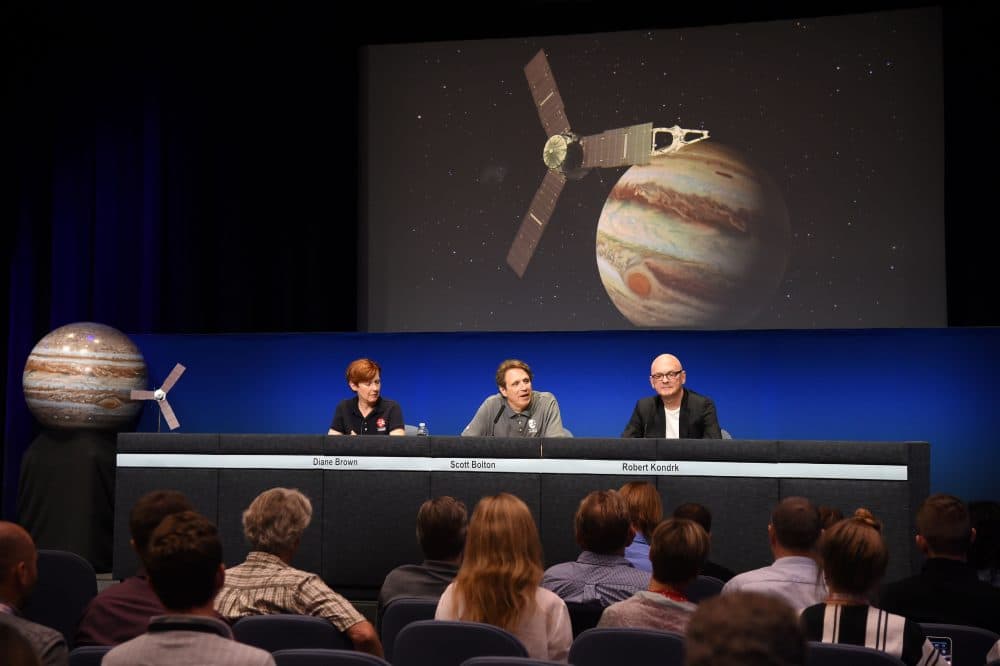Advertisement
NASA's Juno Spacecraft Orbiting Jupiter

After nearly five years en route, NASA’s Juno spacecraft has entered Jupiter's orbit. The unstaffed craft will take pictures and gather data that will help scientists understand how the planet was created.
Here & Now's Jeremy Hobson speaks with NASA scientist Steven Levin about Juno's mission.
Read the most recent Juno coverage via NPR.
Interview Highlights: Steven Levin
How did Juno get all the way to Jupiter?
“To begin with, we launched the spacecraft from Earth without enough speed to get to Jupiter. Because that would have taken a bigger rocket than we could afford to use. So what we did is launched it from the Earth, and orbit around the Sun, it went out past the orbit of Mars, and then we fired the main engines on the spacecraft, to aim so it came all the way back to the Earth and did an Earth fly-by. And we let the Earth’s motion and gravity give us an extra boost, change the direction, and from there, we coasted all the way out to Jupiter.
That process has taken almost five years. We launched it in August of 2011. We did our Earth fly-by in 2013. And here we are, ready to arrive in Jupiter, where we will, when we get close to the planet, fire the main engine again, to slow down, so we ride the Jupiter train and get into orbit on Jupiter, as opposed to just flying on by."
What do you want to learn from the photos that will come back from Juno?
"Yes, we will be taking some great pictures of Jupiter, but our science comes from a lot of other great things besides pictures.
For example, what I think is the single most important number we’ll measure at Jupiter will be the water content. How much water does Jupiter have? And the reason that’s so important to us, that will teach us about how and where and when Jupiter formed. And by learning about how Jupiter formed, we really learning about how all the of planets formed, how the entire solar system formed.
Because if you look at our solar system, with almost all the mass in the sun, 99.5% of the mass is in the Sun, most of the leftovers, more than two-thirds of the leftover mass from the Sun, is Jupiter. And all the other planets are sort-of the leftovers from forming Jupiter.
So it’s really important, if we want to understand the solar system, to understand how Jupiter formed."
How does this feel for you personally, being so involved in this mission?
"Well this is a pretty exciting time. It’s a tense moment as well, as the spacecraft goes into orbit. We fired the main engine a couple times before, the spacecraft seems to be working well, humming like a top. We don’t have anything that I look at and say ‘Oh my gosh that’s risky.’ But on the other hand, the stakes are really high. If we don’t fire the main engine at the right time and get into orbit, then we don’t have a science mission anymore.
So even though I’m really confident that it’s all going to work, I’m also a little nervous, and a little tense, and will probably be a little tense until the last moment when we finally see the doppler data, and say ‘Yeah we’re good, we’re in a good orbit.’”
Guest
Steven Levin, Juno project scientist, NASA.
This article was originally published on July 04, 2016.
This segment aired on July 4, 2016.